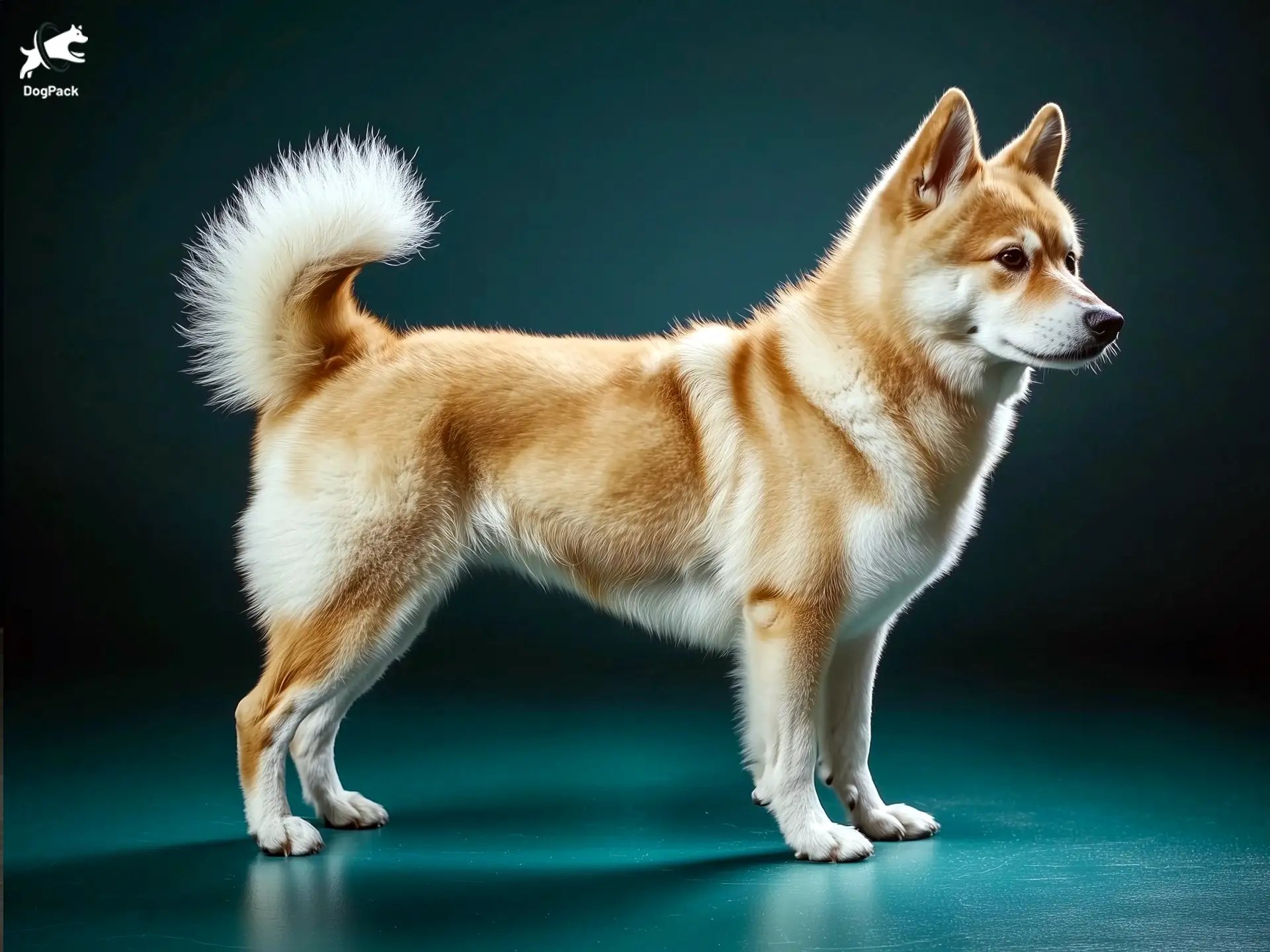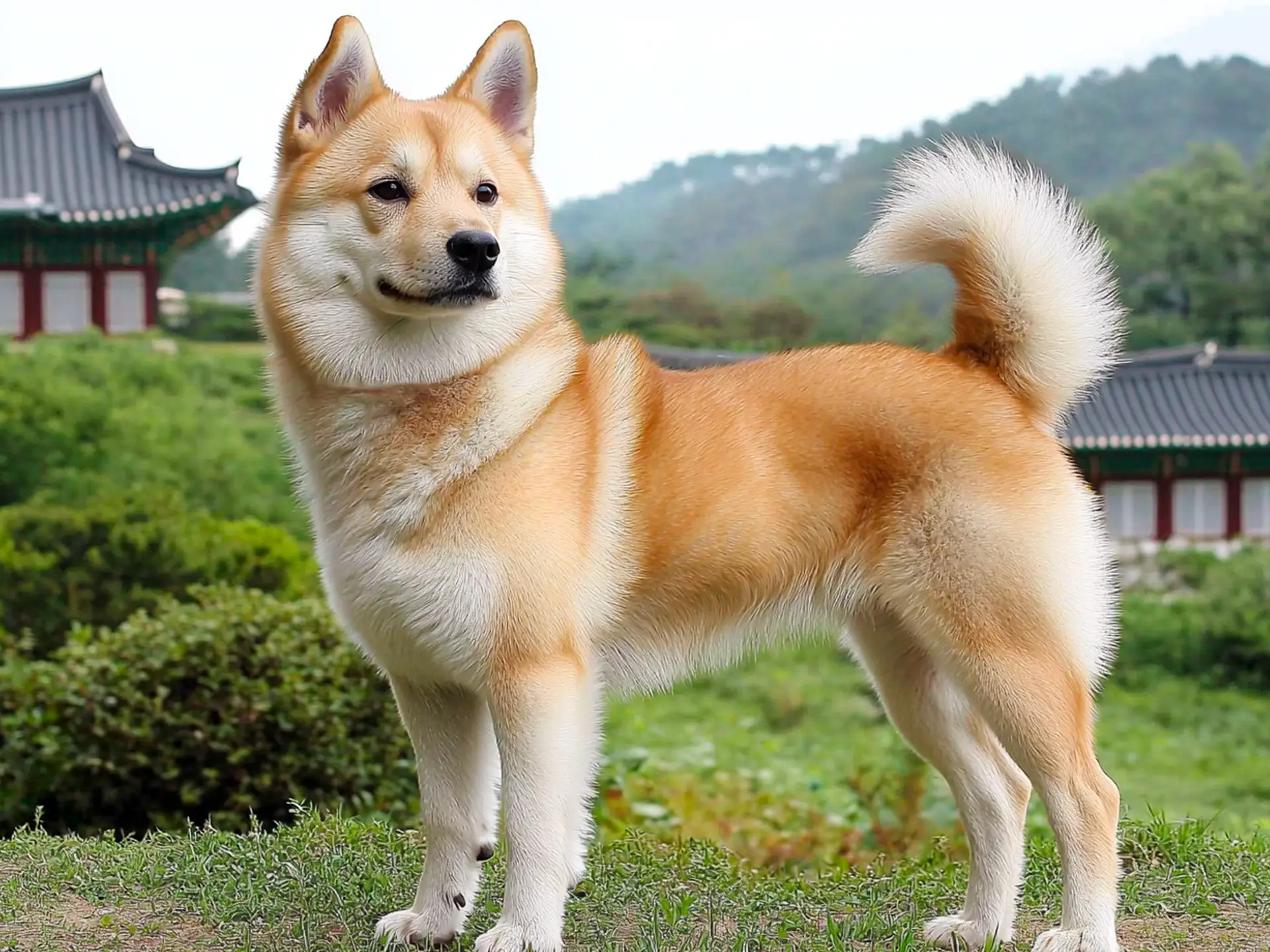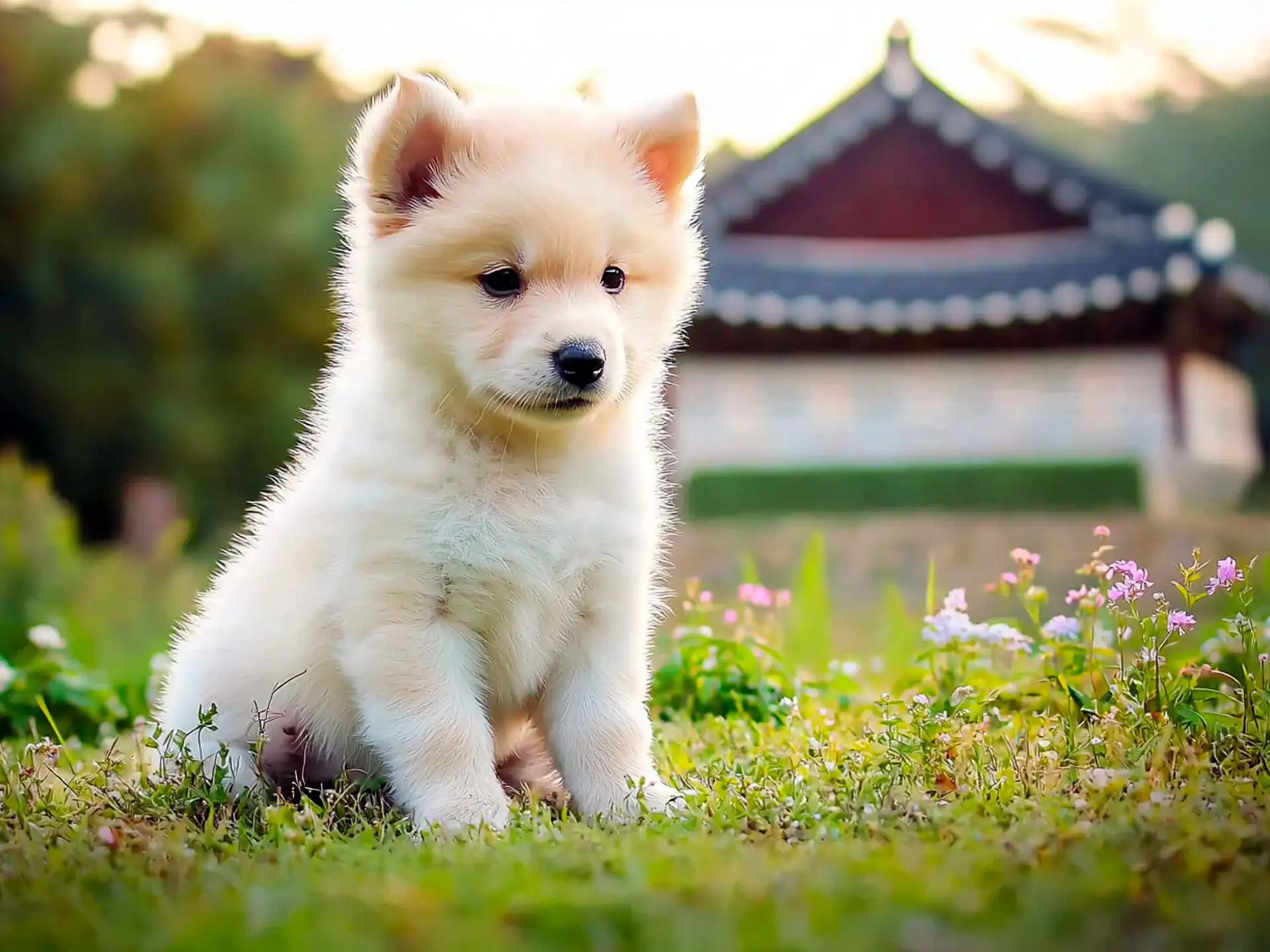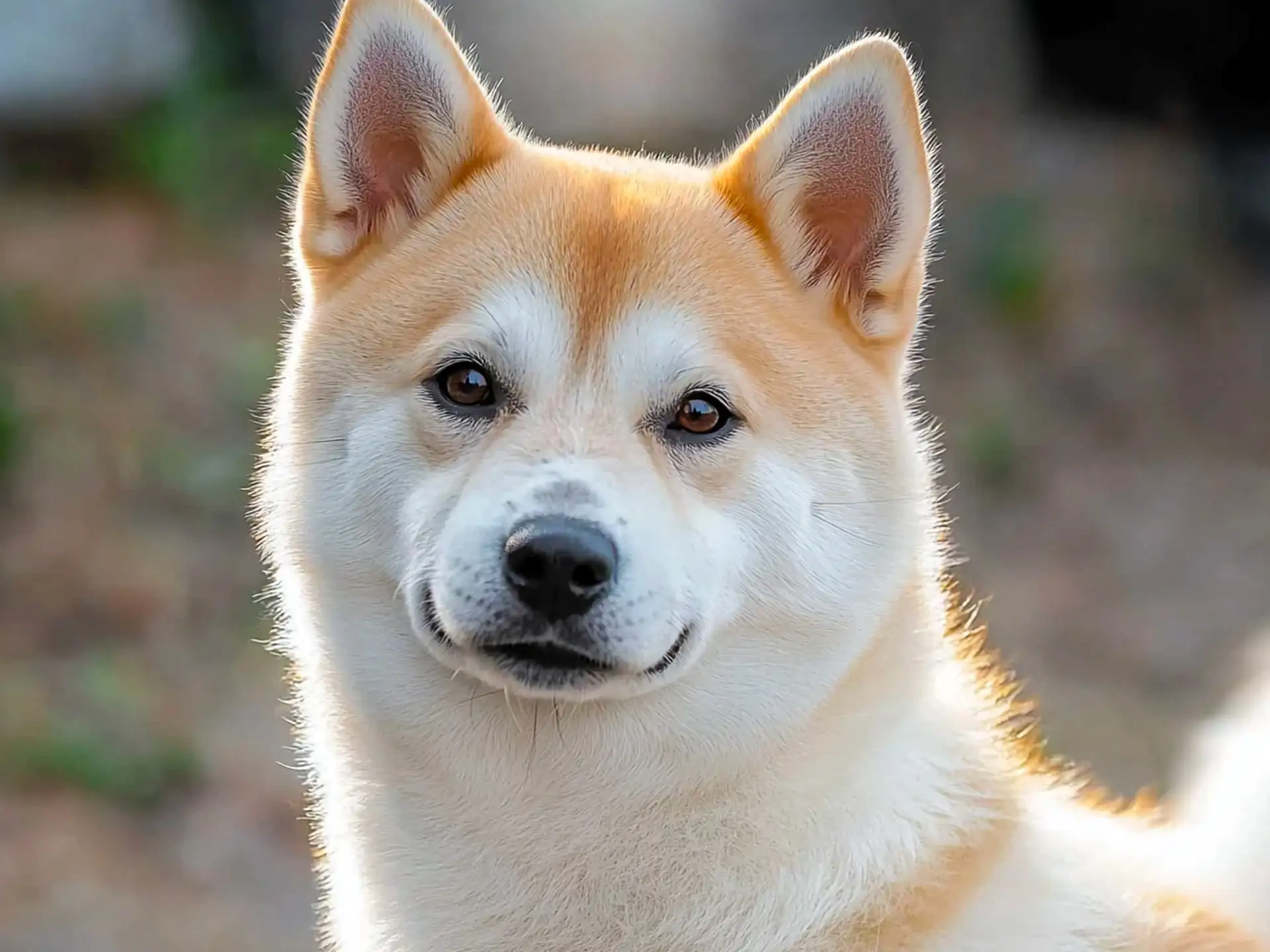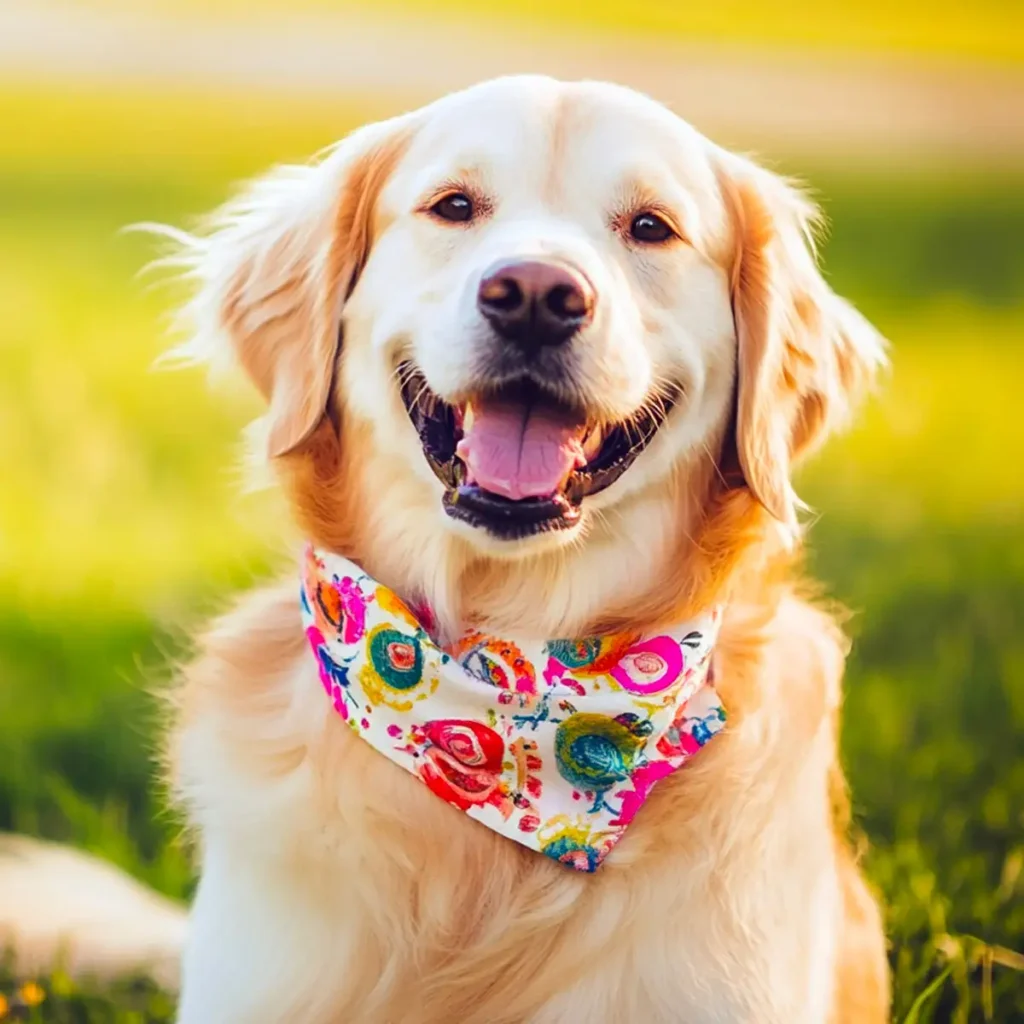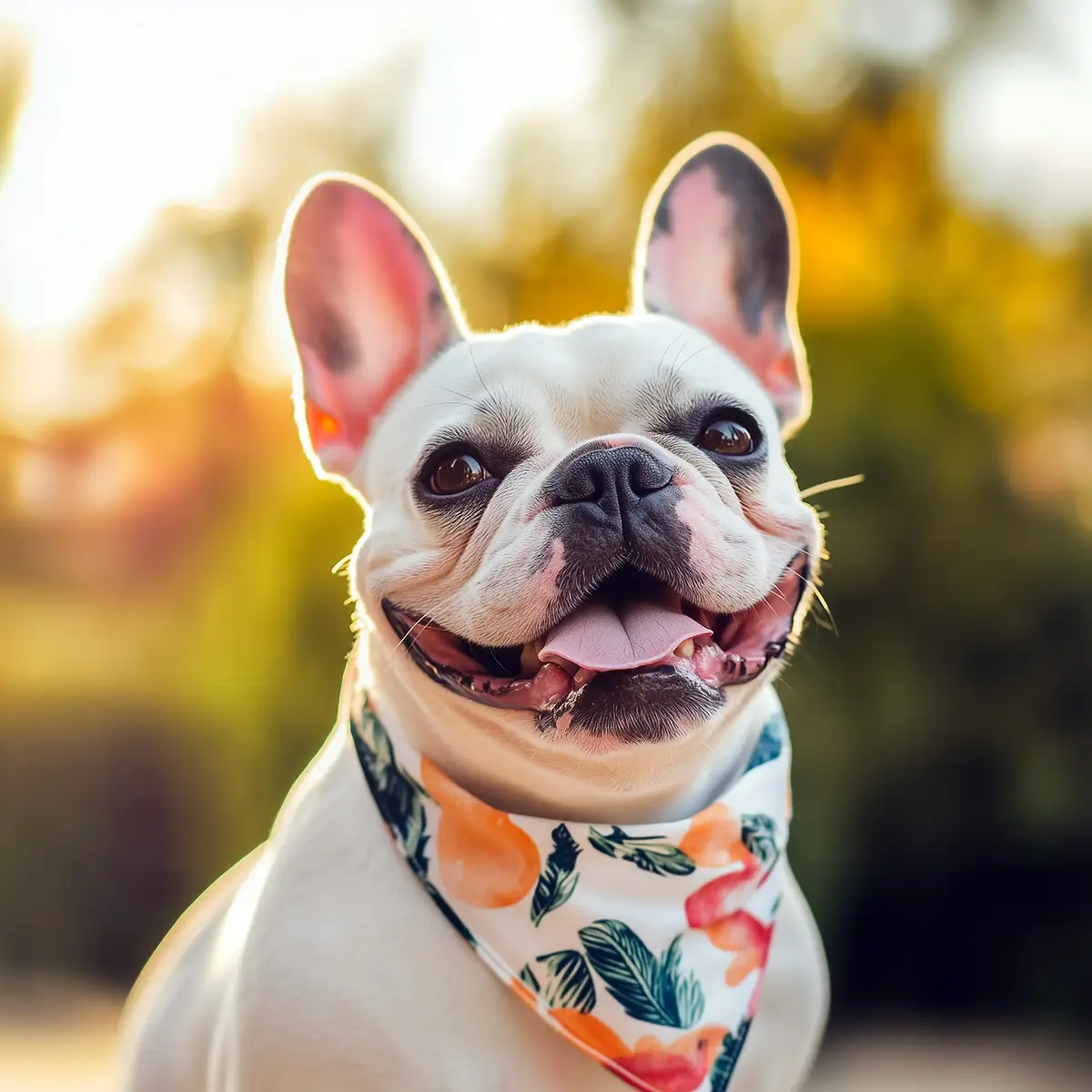Korean Jindo Dog Breed Info & Overview
The Korean Jindo is a rare, medium-sized spitz-type dog famous for its unwavering loyalty, intelligence, and athletic prowess. Originating from Jindo Island in South Korea, this breed has become a cherished symbol of devotion. Whether scaling mountainsides or guarding loved ones, they thrive on building strong bonds and showcasing their natural protective instincts.
Characteristics
Pictures
Breed History
The Korean Jindo traces its roots back centuries to Jindo Island, located off the southwest coast of South Korea. While there’s no definitive record pinpointing their exact beginnings, folklore speaks of these courageous dogs aiding local hunters in capturing game on rugged terrain. Their keen instincts and unwavering drive made them invaluable companions to the region’s inhabitants.
Over time, these canines became ingrained in Korean culture, earning admiration for their fierce loyalty and sharp senses. In fact, they’re designated as a national treasure in South Korea, a testament to their heritage. Historically, Jindos were used for tasks ranging from hunting boar to protecting homesteads, solidifying their status as versatile and fearless dogs.
As trade and travel expanded, the Korean Jindo began to appear in other regions, capturing the interest of dog enthusiasts. Today, breed clubs around the world strive to maintain its original traits and preserve its lineage. For those interested in exploring similarly resilient canines, check out our medium dog breeds category for more remarkable companions.
Temperament, Personality
Loyalty is the hallmark of this breed’s temperament, often forming unbreakable bonds with their chosen family member. They’re not the type to greet every stranger with a wagging tail; instead, they tend to be cautious and observant. Despite their reserved nature, they are affectionate with those they trust, showing deep devotion and even a touch of playfulness.
Early socialization can help them become more comfortable around unfamiliar faces, making meet-and-greets less tense. If raised alongside children, they usually show patience and protectiveness, though supervision is wise given their strong instincts. Their natural independence can come across as aloof, yet it aligns well with their history as self-reliant hunters and devoted guardians.
The Korean Jindo’s personality also includes a heightened prey drive, which can sometimes be an issue in multi-pet households. Introducing them to other pets slowly and under controlled conditions is crucial. However, once boundaries and hierarchies are established, they often coexist peacefully. Their loyal, watchful demeanor makes them excellent companions for owners seeking a devoted protector.
Physical Characteristics
Bred for agility and endurance, these dogs feature a lean yet muscular build, allowing them to maneuver through rugged terrains. Standing around 18 to 22 inches at the shoulder, they possess a balanced posture that exudes alertness. Their upright ears and almond-shaped eyes give them a keen, inquisitive expression reminiscent of other Spitz-type breeds.
The coat is double-layered, with a dense undercoat providing insulation and a harder outer coat that repels dirt. Typically, you’ll find them in hues of white, fawn, red, or gray, though a variety of shades exist. Their bushy tail curls over the back, contributing to the breed’s iconic silhouette and balanced gait.
The Korean Jindo tends to weigh between 30 and 50 pounds, with males generally larger than females. Despite their relatively moderate size, they exhibit a robust frame and a commanding presence. This sturdy structure, combined with their characteristic alert stance, underscores their heritage as both hunting partners and steadfast guardians.
Health Issues
Known for their robust constitution, these dogs generally enjoy few major health concerns. However, potential issues such as hypothyroidism, hip dysplasia, and various skin allergies can still emerge. Regular checkups are crucial for early detection and treatment. Routine blood work, hip evaluations, and allergy screenings help keep them fit and nip any developing problems in the bud.
Dental care often goes overlooked but plays a vital role in overall well-being. Incorporate regular teeth brushing to ward off plaque and gum issues, which can progress to more serious conditions if neglected. Monitoring weight is equally important, as obesity can exacerbate joint problems and strain the cardiovascular system, especially in active breeds like this one.
For the Korean Jindo, consistent vet visits ensure any hereditary tendencies are caught in time. Eye examinations can be beneficial, as some lines may exhibit minor vision concerns later in life. By partnering with a trusted veterinarian and adhering to recommended screenings, owners can significantly enhance their dog’s overall quality of life and longevity.
Grooming Needs
Despite their self-cleaning tendencies, these dogs benefit from regular grooming to keep shedding in check. A weekly brush with a slicker or bristle brush helps remove loose hair and distribute natural oils. During seasonal shedding periods, daily brushing might be necessary to manage the heavier coat drop. Thankfully, their fur repels dirt, so bathing is only needed occasionally.
Pay close attention to the ears, ensuring they are free of wax buildup or redness that might signal infection. Trimming the nails every few weeks is equally vital, preventing discomfort or gait issues as they walk or run. Adding a vet-approved ear cleaner to your routine can also help maintain a healthy, odor-free environment inside those upright ears.
For a Korean Jindo’s coat, focus on gently brushing in the direction of hair growth to avoid irritating the skin. Some owners like to use a de-shedding tool during heavy molts, especially around the neck and hindquarters. Always check for ticks or fleas after outdoor adventures, as their thick double coat can conceal parasites if not thoroughly examined.
Exercise Requirements
These active dogs thrive on a mix of physical and mental challenges each day. A brisk morning walk combined with an evening jog or game of fetch can help burn off energy. They excel at agility courses, which engage their sharp minds and agile bodies. Without adequate exercise, they might channel their pent-up energy into unwanted behaviors.
When left alone for extended periods, providing puzzle toys or treat dispensers helps keep them occupied. Because of their strong prey drive, secure, fenced-in areas are essential for off-leash play. Daily walks shouldn’t be rushed; these inquisitive dogs often love to sniff around and explore. Satisfying their curiosity can be just as tiring as a run.
For the Korean Jindo, variety in exercise routines is vital. Switching between hikes, short sprints, and obstacle courses keeps them physically fit and mentally engaged. Many owners also incorporate interactive play sessions like hide-and-seek or flirt poles to tap into their chasing instinct. The key is consistency and creativity—regular stimulation keeps this intelligent breed content and well-behaved.
Training Tips
Patience is a virtue when training these strong-willed dogs. They respond best to positive reinforcement methods—treats, praise, and gentle encouragement go a long way. Because they’re naturally independent, you may need to break lessons into shorter sessions that keep them engaged. Consistency is essential, as inconsistent cues or rules can confuse them and prolong the training process.
Obedience classes or working with a professional trainer can help refine techniques and address specific challenges. Confidence-building exercises—like navigating small hurdles or tackling puzzle toys—foster trust and cooperation. Always reward good behavior immediately, so they link the action with the praise. Once they grasp the basics, consider more advanced drills to satisfy their curious, energetic spirits.
For a Korean Jindo, early socialization is as crucial as obedience training. Introduce them to diverse environments, people, and pets to minimize territorial tendencies. Using a calm, confident demeanor during training sessions is key—this breed quickly picks up on nervous or inconsistent signals. With dedication and patience, you’ll nurture a loyal, well-mannered companion.
Nutrition, Diet
A well-balanced diet for this active breed should focus on lean proteins and moderate fat content. Look for dog foods containing at least 24% protein and 12% fat. High-quality kibble or a balanced raw option can work, provided ingredients are wholesome and free of unnecessary fillers. Omega-3 fatty acids from fish or flaxseed help maintain coat health.
For an adult weighing around 40 pounds, start with two to two-and-a-half cups of food per day, split into morning and evening meals. Adjust portions based on activity level; more exercise may require slightly higher rations. Keep treats to about 10% of their daily calorie intake. Overindulgence can lead to unwanted weight gain, which puts strain on their joints.
For a Korean Jindo with a vigorous schedule of hikes or agility sessions, adding specialized joint supplements can provide extra support. Glucosamine and chondroitin are popular picks to maintain healthy cartilage. Always consult with a trusted veterinarian before making dietary changes or supplement additions, ensuring your dog’s nutritional plan remains balanced and tailored to their unique energy demands.
Adoption, Breeders
Finding a reputable source is crucial, as this breed’s popularity has led to unethical breeding practices. Look for breeders who prioritize health screenings and adhere to breed standards, ensuring you receive a well-adjusted pup. Visiting the breeder’s facility or speaking with previous buyers can give you insight into their methods and help guarantee a healthy, ethically raised companion.
If adoption appeals to you, start by checking breed-specific rescues or local shelters. Organizations like Korean Jindo Love Rescue specialize in rehoming these dogs and can provide detailed insight into each dog’s background. Keep in mind that rescued adults may need extra time to adjust, but patience and structured support can help them settle into a loving forever home.
The United Kennel Club also maintains resources on Korean Jindo standards and recognized breeders. Whether you choose adoption or purchase from a certified breeder, review the dog’s lineage and health records. This ensures you’re welcoming a pup with the best chance for a vibrant, well-rounded life—fitting for such a rare and culturally significant breed.
Family Pet?
These dogs can make wonderful family pets, provided they receive proper training and socialization. Their unwavering loyalty translates into protectiveness over household members. While they may be a bit reserved around strangers, once they trust someone, they become affectionate companions. Families who maintain a structured, active lifestyle typically reap the full rewards of the breed’s devotion.
Though patient with children they know, it’s best to supervise interactions to prevent accidental rough play. These canines have strong prey drives, so living with smaller pets—like rabbits or hamsters—might be challenging. That said, proper introductions and consistent boundaries can lead to harmonious coexistence. They often thrive in environments that allow them to bond closely with family members.
For a Korean Jindo in a family setting, daily exercise and mental stimulation prevent boredom that can lead to mischief. Regular walks, play sessions, and puzzle toys channel their energy productively. Because they’re attentive to their environment, they’ll quickly alert you to anything unusual—providing both companionship and a sense of security for households that embrace their loyal spirit.
Right For You?
Active individuals or families who can dedicate time to training, exercise, and socializing will likely find a devoted companion in this breed. If you’re drawn to dogs that form deep bonds and excel at protective tasks, they could be an excellent match. However, they aren’t ideal for novice owners or those seeking a highly sociable pup that loves everyone equally.
Consider your living space, too. Although they adapt to smaller homes with enough daily walks and mental challenges, a fenced yard is preferable for safe exploration. Their curiosity can lead them astray if left unchecked. People with a strict work schedule might struggle to provide the necessary interaction, which is essential to curb unwanted behaviors and anxiety.
Ultimately, a Korean Jindo thrives where leadership is consistent, boundaries are clear, and daily adventures are plentiful. They reward committed owners with unwavering loyalty and a watchful eye on loved ones. If your household values an intelligent, independent-minded dog with a dignified air, this breed may be precisely the four-legged companion you’ve been waiting to welcome home.
Conclusion
The Korean Jindo stands out as a devoted, intelligent breed that can bring immense joy to the right home. Their signature loyalty and protective nature mean they thrive with families or individuals prepared to provide consistent guidance, ample exercise, and plenty of mental challenges. From daily walks to puzzle toys, they flourish when their active minds are engaged. If you’ve weighed the pros and cons and feel ready for a vigilant companion eager to forge a deep bond, this rare gem could be your perfect match. As always, do your homework on responsible breeding or reputable rescues before welcoming one into your life. Feel free to share your own Jindo tales or questions in the comments below—your experiences can help others make informed decisions.
FAQs
-
What makes the Korean Jindo different from other spitz-type dogs?
The Korean Jindo stands out due to its extreme loyalty, independent problem-solving skills, and strong prey drive. Unlike many spitz breeds, they form an unbreakable bond with one owner, often refusing to be rehomed. Their intelligence allows them to make decisions independently, making them excellent hunters and guardians.
-
Can a Korean Jindo live in a multi-pet household?
Jindos have a strong prey drive and dominant personality, which can make them challenging in multi-pet homes. While they may tolerate other dogs if raised together, they can be territorial. Small pets like cats or rabbits may trigger their hunting instincts, requiring strict supervision and training.
-
Why is the Korean Jindo known for escaping?
Jindos are escape artists due to their intelligence and agility. They can jump high fences, dig under barriers, and even open doors. A secure yard with at least six-foot fencing and underground reinforcement is crucial. Mental stimulation helps reduce their urge to escape and explore.
-
How do Korean Jindos react to strangers?
Korean Jindos are naturally wary of strangers and make excellent watchdogs. They tend to be reserved rather than aggressive, observing before deciding whether to accept a new person. Proper socialization from puppyhood helps them become well-mannered around guests.
-
Are Korean Jindos easy to train?
Jindos are highly intelligent but notoriously independent, making training a challenge for inexperienced owners. Unlike eager-to-please breeds, they think for themselves and may ignore commands if they see no purpose. Positive reinforcement, firm leadership, and short, engaging training sessions work best.
Breed Ratings
The Korean Jindo is bright and learns quickly, though a streak of independence can make training more challenging.
They can be playful with loved ones, but a reserved nature means they’re not as boisterous as some other breeds.
The Korean Jindo thrives on daily activities and mental challenges, requiring consistent exercise to stay balanced.
Seasonal shedding is significant, so expect a few weeks of intense coat blowouts alongside moderate year-round hair loss.
With deep hunting roots, this breed has a strong instinct to chase, so caution is essential around smaller animals.
While brushing is straightforward, their dense double coat can require extra work during heavy shedding periods.
Intelligent but independent, they respond well to positive methods. Consistency and patience are key to successful training.
Extended isolation can lead to boredom or anxiety, making interactive toys and enough social contact essential.
Generally quiet, but they will bark or howl to alert owners of potential intruders or unfamiliar noises.
Drooling is minimal, making them relatively neat around the house compared to more slobbery breeds.
Early socialization is needed; they’re often cautious or dominant with unfamiliar canines, especially those of the same sex.
Overall a sturdy breed, though vigilance with hip, thyroid, and skin checks helps ensure a long, healthy life.

